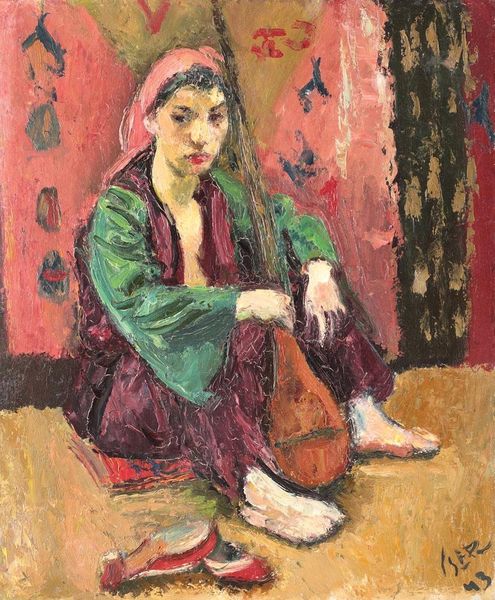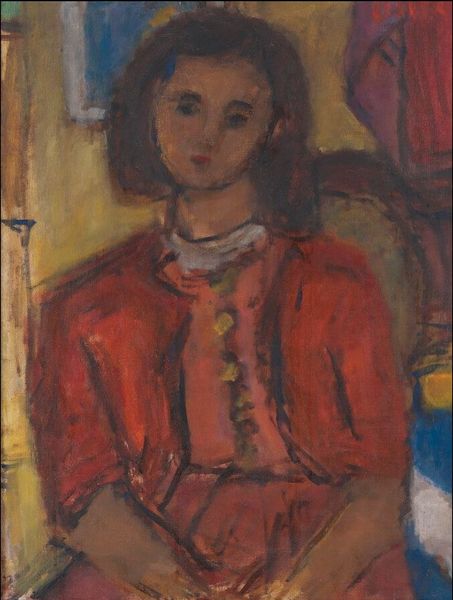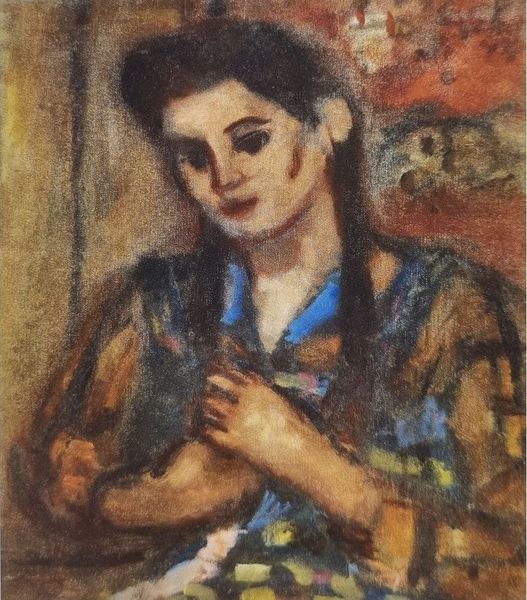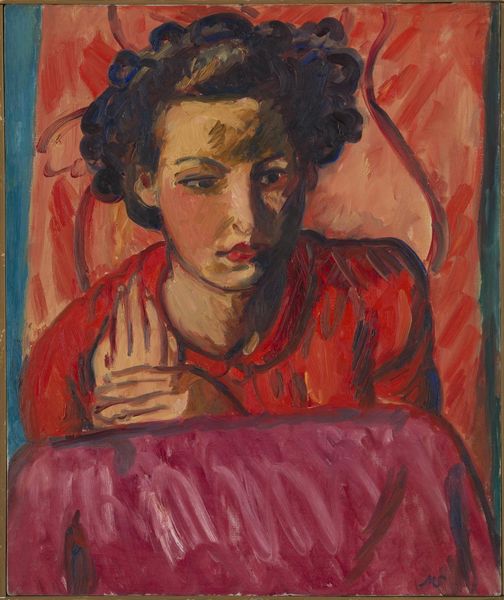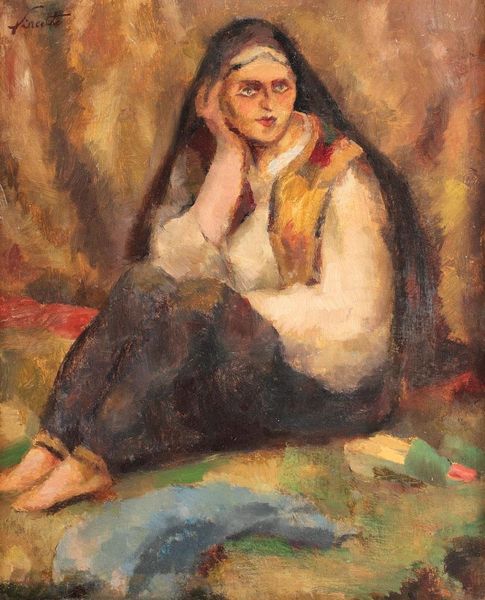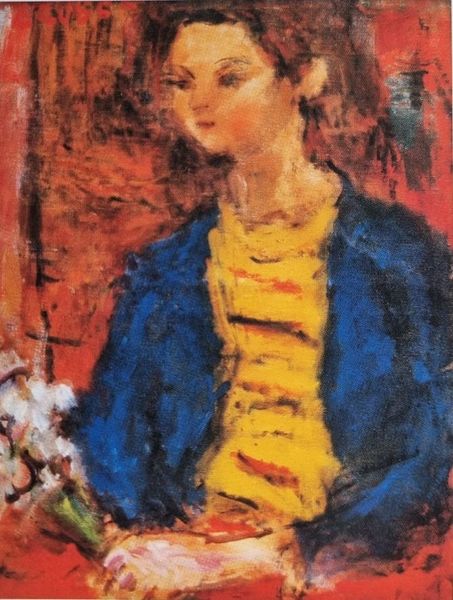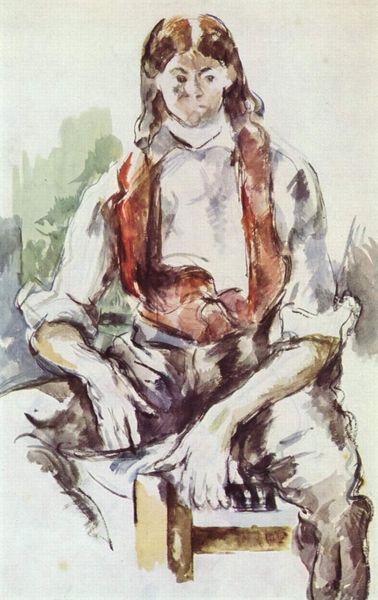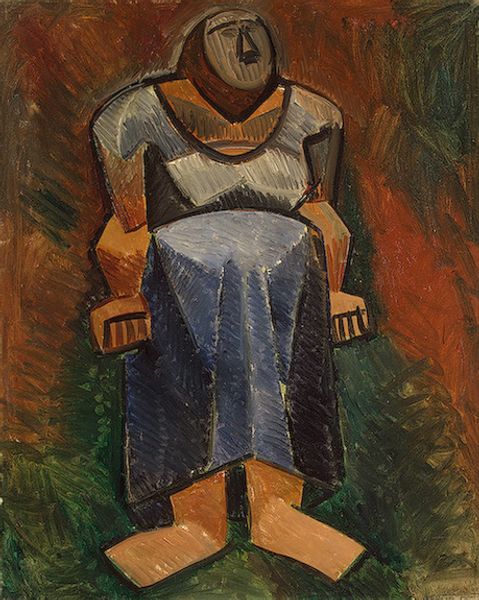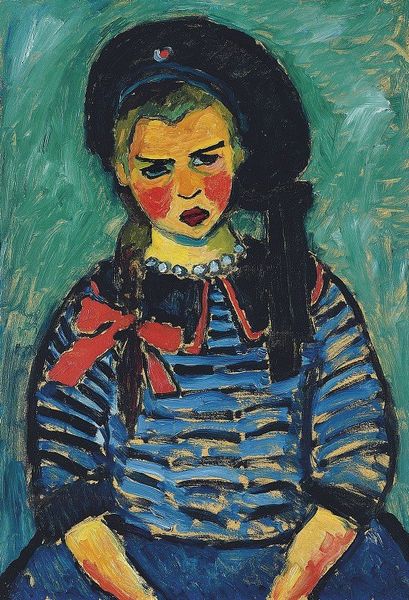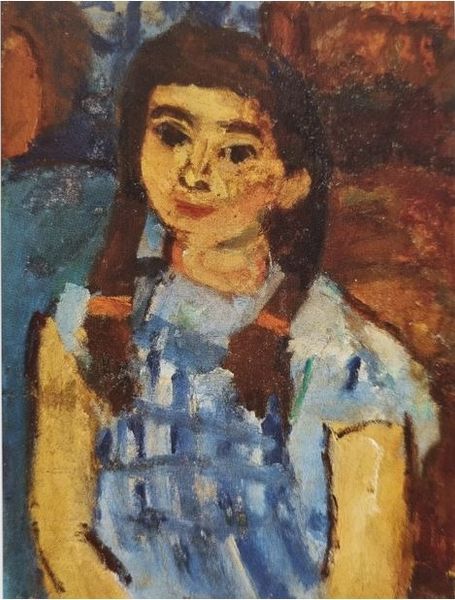
drawing, coloured-pencil
#
portrait
#
drawing
#
coloured-pencil
#
figuration
#
oil painting
#
coloured pencil
#
portrait drawing
#
watercolour illustration
#
realism
Copyright: Iosif Iser,Fair Use
Curator: Iser's “Tatar Woman in Yellow”, executed in coloured pencil, presents a compelling study in contrasts. What’s your first take? Editor: Melancholy. The palette is soft, yet the overall effect feels subdued, even burdened. The woman’s pose amplifies that sense; head in hand, eyes cast downward. It reminds me of late 19th-century depictions of women consumed by interiority. Curator: Interesting. Notice how the yellow of her garment is countered by the coolness of the backdrop, that almost mournful blue-grey? Iser manipulates colour temperature to create a visual tension, a certain vibration that keeps the image from settling into mere representation. Editor: Indeed. And the woman’s clothing – that vibrant yellow, patterned cuffs – those read to me as markers of cultural identity, perhaps a reference to Tatar folk traditions. The colours also pop, which provides insight to Iser as an artist as much as of his subject. It might represent a connection to her roots in a society where she feels marginalised or othered, wouldn't you say? Curator: The interplay between surface and depth, the way the coloured pencil both defines form and dissolves into atmospheric abstraction...It almost echoes Cubist concerns with flattening the picture plane, despite the clear figuration. Editor: I think you make a valid point. However, I see more of an underlying narrative, perhaps a subtle comment on cultural displacement, or even a more universal statement about the weight of societal expectations on women. Her traditional clothing does provide contrast. Her downward gaze gives it that melancholy touch we first spoke about, no? It's about capturing the emotional landscape behind the portrait. Curator: I see your point, but what I see as Iser using a restricted tonal range. Look again at how those yellows and reds—echoed in the patterned floor covering and shawl—frame her body like theatrical spotlights. I find her downward gaze contributes a great deal to the compositional cohesion of the portrait. Editor: And that composition reinforces the feeling of introspection, don’t you think? We see a confluence of emotion and aesthetic rigor here, where colour and pose are equally expressive. Iser's choice of imagery may mean she represents universal suffering. Curator: A beautiful example of how formalism and iconography can together lead us to an understanding of a work's deeper complexity and emotion. Editor: It shows the artist's attempt to highlight a sensitive perspective that considers the intersection between personal turmoil and cultural identity.
Comments
No comments
Be the first to comment and join the conversation on the ultimate creative platform.
